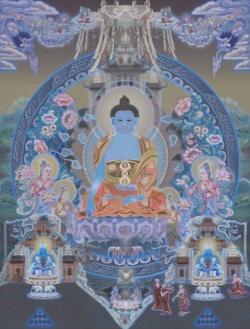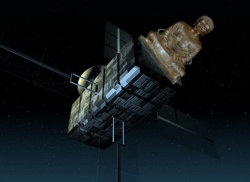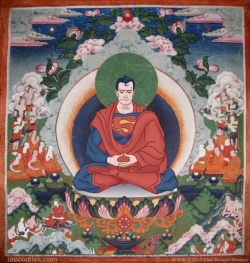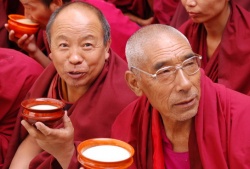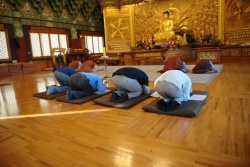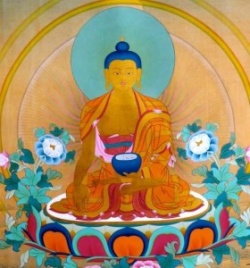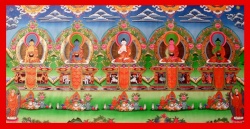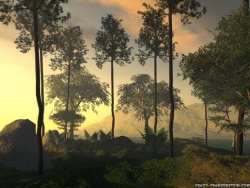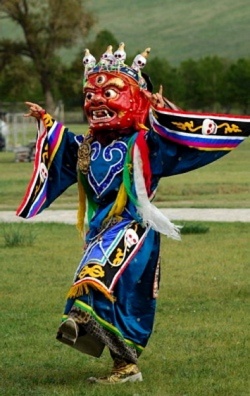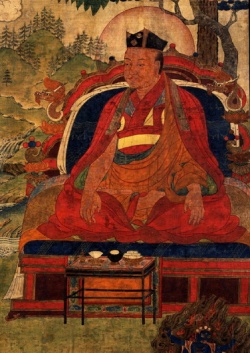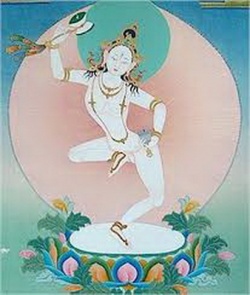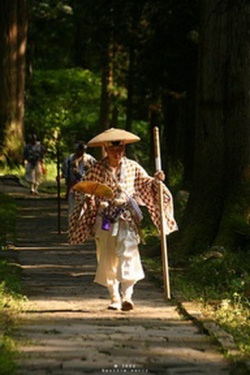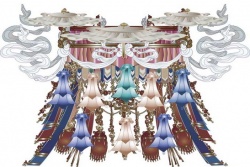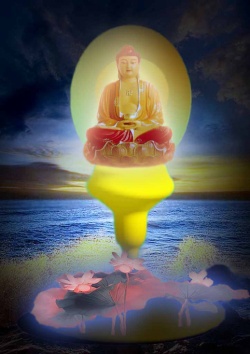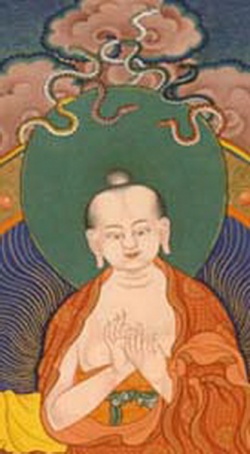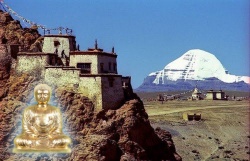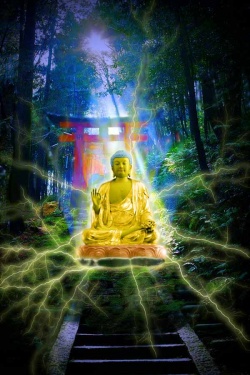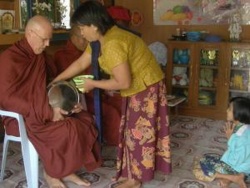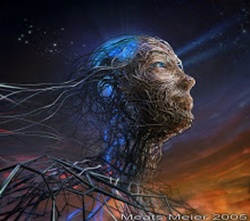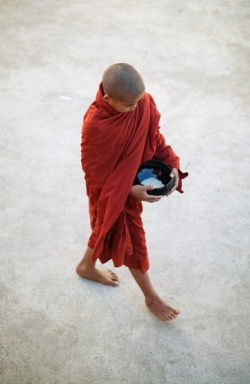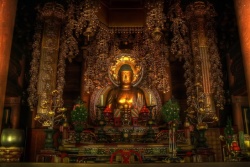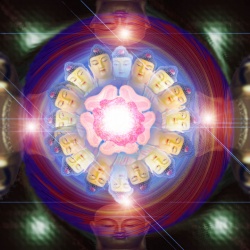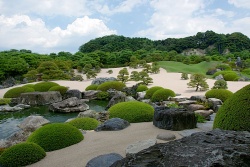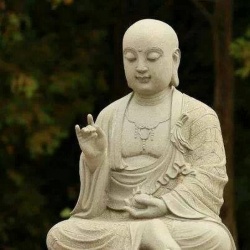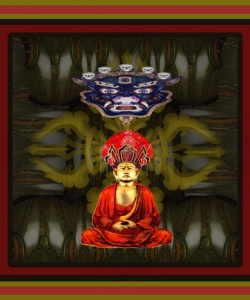Against the view that the Pure Land sutras are not Shakyamuni’s teaching, but a later invention.
First, it is of common sense to realize that the time when a sutra was put into written form was not automatically the time of its creation. During Shakyamuni’s life and later, upon his physical death, his discourses (sutras) were transmitted orally and sometimes through special states of mind called samadhi,
by his closest disciples, for a few hundred years, before they were put into written form. Some falsely state for example, that the pali canon of Theravada school is the oldest and thus the most reliable collection of sutras,
but if we accept that all the discourses or sutras originated from Shakyamuni, then the fact that some were put into written form earlier than the other, is not a proof for their exclusive authenticity.
So, Mahayana and Pure Land sutras existed and were transmitted in the same time with the sutras of the Pali cannon, just some monks recognized only the latter while others considered the first as being genuine, too.
Each group put into written form their own basket (pitaka) of recognized sutras, some earlier and some later.
But no one can prove by means of archaeological evidence that his school’s basket of sutras were actually preached by Shakyamuni while the other’s not, and the earliest creation of a writing canon is not a proof for authenticity.
If a group didn’t write its sutras in the same time with the others or earlier, this doesn’t mean its transmission is not authentic and did not continue in parallel from Master to Master.
No one can prove that Shakyamuni did not imparted some sutras only to a group of special disciples which were opened and more prepared to receive them than others and who, in turn,
transmitted such sutras to their own chosen disciples in an uninterrupted succession, until one day they decided its time to give them a written form.
No one can check and investigate the Buddha’s mind or the minds of his closest disciples and their actions by means of archaeology.
If we read about the Buddhist councils who first compiled orally the discourses of the Buddha, soon after his physical death, we see that the monks who attended such councils could all recite by heart dozens of those discourses and that all were accomplished Masters.
Also, we know from the first passages of the Sutra on the Buddha of Immeasurable Life (Larger Sutra), that among the assembly gathered on the Vulture Peak, where Shakyamuni delivered it, there were “twelve thousand monks […] all great sages who had already attained supernatural powers”.
This aspect is extremely important because it is an indication about who were the monks who heard that sutra and later transmitted it to further generations.
They were monks who “attained supernatural powers” and is naturally that these monks used their mind power to accurately transmit this sutra to further generations.
Among these monks we read the names of Venerable Mahakasyapa, Venerable Sariputra, Venerable Mahamaudgalyayana and Ananda. “All of these were Eders”, says the sutra. But monks with supernatural powers were not the only listeners.
Great transcendental Bodhisattvas like Samantabhadra, Manjusri and Maitreya, the future Buddha, were present too, and they all rejoiced at hearing Amida Dharma, which means they had faith in it and later helped in its promotion.
More than this, Shinran presents the testimony of his own Master, Honen Shonin (Genku), who revealed to him that in a previous life he was present too, on Vulture Peak where the Larger Sutra was preached:
“Genku himself said,
‘Formerly, I was among the assembly on Vulture Peak;
I practiced austerities with other sravakas
And guided beings to the Buddhist path”.
This is a proof for us, disciples of modern times, that the event described in the Larger Sutra is a real one.
As we know, Shinran never regarded Honen as an ordinary person, but a returner from the Pure Land[1], thus taking his revelation very serious and we have no reason for doing otherwise.
I wonder how modern scholars can verify with their limited mind and methods, the presence of all those great beings on the Vulture Peak and their further work of spreading this sutra!
In reality, these so called scholars and teachers are acting like they understand everything related with Shakyamuni and the transmission of the Pure Land sutras.
They do not accept that this transmission might go beyond the capacities of their limited minds to understand.
They do not accept the possibility that for some centuries it might had been an orally transmission, or a mind to mind transmission or maybe a special transmission by disciples of high spiritual capacities through the concentrated state of mind called samadhi.
Such kind of transmissions, even the simple orally one, can’t be proved or denied by archaeological means.
Nobody can check the minds of Shakyamuni and his closest disciples who dedicated themselves to the proper transmission of the Pure Land sutras until they were finally put into written form[2].
More than this, we clearly see that the transcendent Power of Shakyamuni Buddha lies within the transmission of the Larger Sutra to the future generations, even after all other sutras would have been disappeared:
“In the future, the Buddhist scriptures and teachings will perish. But, out of pity and compassion, I will especially preserve this sutra and maintain it in the world for a hundred years more. Those beings who encounter it will attain deliverance”.
Here, the words “I will especially preserve this sutra” are extremely important, because Shakyamuni himself vows to help its transmission and never let it disappear. Such a promise is beyond the capacity of unenlightened people to comprehend, but nevertheless it’s a true promise upon which we can depend, because it was made by a fully Enlightened Buddha.
The truth is that we, Buddhist disciples of these times, far removed from the physical presence of Shakyamuni, have only two choices, we either accept in faith the Pure Land sutras as being genuine, like all the Patriarchs and Masters of our school did, including Shinran, or we discard it.
Shakyamuni himself said at the end of the Larger Sutra on the Buddha of Immeasurable Life (the Larger Sutra):
“Most difficult of all difficulties is to hear this sutra, and accept it in faith. Nothing is more difficult than this”.
As we clearly see from Shinran’s written work, he relied on Amida and his Primal Vow only because this was, in his opinion, the teaching of Shakyamuni recorded in the Larger Sutra.
He and all the Patriarchs and Masters of our school never doubted that this sutra was the genuine preaching of Shakyamuni.
The reason why they had trust in this sutra and other Pure Land sutras, was especially because Shakyamuni delivered it.
More than this, Shinran considered the Larger Sutra, in which the Primal Vow was revealed, to be the main reason of Shakyamuni’s appearance in this world.
He could not say this if he considered it a later invention of some Buddhist monks, as so called modernists scholars argue.
Thus, he stated in Shoshinge:
“The reason for the Buddha's appearance in the world
Is solely to expound the Primal Vow of Amida, wide and deep as the ocean.
All beings in the evil age of the five defilements
Should believe in the truth of the Buddha's words.”
The words of the Buddha are superior to the teachings of humans, even if those humans might be saints.
“Amida, who attained Buddhahood in the infinite past,
Full of compassion for foolish beings of the five defilements,
Took the form of Sakyamuni Buddha
And appeared in Gaya ”
So, in Shinran’s view, Shakyamuni was in reality the manifestation of Amida.
This is an even greater proof that the path of birth in the Pure Land, presented in the Larger Sutra, is true.
This sutra is not only Shakyamuni’s teaching, but Amida’s direct exposition through the mouth of Shakyamuni.
So, those who don’t accept the Larger Sutra to be an authentic discourse of Shakyamuni, are destroying the foundation of the entire Jodo Shinshu path and they accuse Shinran and all the Patriarchs and Masters of our school to be liars or ignorant.
If we carefully study Shinran, we see that he clearly accepted the Larger Sutra and all the Pure Land sutras in faith only, without ever doubting that this was actually taught by Shakyamuni and never had he imagined it might be a later invention of some monks:
“The teaching of the Pure Land way is found in the Larger Sutra of the Buddha of Immeasurable Life [….]
It reveals that Shakyamuni appeared in this world and expounded the teachings of the way to Enlightenment, seeking to save the multitudes of living beings by blessing them with the benefit that is true and real.
Assuredly this sutra is the true teaching for which the Tathagata appeared in the world. It is the wondrous scripture, rare and most excellent.
It is the conclusive and ultimate exposition of the One Vehicle.
It is the right teaching, praised by all the Buddhas throughout the ten quarters. To teach Tathagata’s Primal Vow is the true intent of this sutra; the Name of the Buddha is its essence”.
If this sutra is indeed praised by all Buddhas, as Shinran clearly stated, then it means that all Buddhas have done and are doing everything in their power to transmit it to future generations. Thus, this sutra is clearly the genuine teaching of Shakyamuni.
It is of common sense that the Buddhas would not praise the ordinary work of some monks in such an extraordinary way. More than this, the Primal Vow and nembutsu of faith are presented and contained in this sutra.
So, if this sutra is not authentic, that is, if it was not taught by Shakyamuni, then the Primal Vow and nembutsu of faith have no value.
Shinran quotes Wang Jih-hsiu in part three of his Kyogyoshinsho:
“The Sutra of Immeasurable Life is truly the shortest path to attainment of birth, the superlative means to liberation from suffering. All people should embrace its teaching”.
How can such a sutra, the most important sutra among the whole Shakyamuni’s teaching be just the creation of some people?
In Gutoku’s Notes, Shinran says:
“The true and real teaching of the easy practice, the Primal Vow of the Pure Land way; this is the teaching of the Larger Sutra of Immeasurable Life”.
As already explained before, in the Larger Sutra, the Primal Vow was presented, so if this sutra is not genuine, which means, its not the exposition of Shakyamuni Buddha, but the later creation of some monks, then the Primal Vow is also not true, but the creation of human beings.
Things are very clear and logical.
Without Shakyamuni’s testimony, no teaching can be called authentic. The reason why some modern scholars spread false views that Amida Buddha is a fictional character, a myth, a metaphor, symbol, etc, and the Pure Land not something to be attained after death, is because they do not accept that the Pure Land sutras actually came from Shakyamuni.
If the sutras are human creations, then Amida and his Pure Land are human invention too, and to rely on such inventions in order to escape birth and death would be futile.
It is very important to know that, according to Buddhism, “what one Buddha teaches, all Buddhas give witness to”,
which happens especially in the case of Amida’s Dharma through which all beings, without discrimination, are saved (brought to Buddhahood). In the Smaller Amida Sutra, quoted by Shinran in his Kyogyoshinsho, it is said:
“Well does Shakyamuni, in this evil age of the five defilements, in this evil world, among evil sentient beings, evil views, evil passions, and in a time when evil acts and lack of faith prevail,
teach the and praise the Name of Amida, encouraging sentient beings, “if one says the Name, one unfailingly attains birth”.
And where Shakyamuni does this encouragement, if not in the sutras on Amida Buddha and especially in the Larger Sutra?
Shinran explains and then quotes again from the Smaller Amida Sutra:
“Further, the Buddhas throughout the ten quarters, fearing that sentient beings might not accept the teaching of the one Buddha, Shakyamuni, all together with the same intent […], preach these true and sincere words:
‘Sentient beings, each of you should accept what Shakyamuni has taught, has praised, has given witness to!’”
So, those who deny the Pure Land sutras as being the true exposition of Shakyamuni Buddha, also deny the true teaching about Amida and his Primal Vow, which means they regard all Buddhas as liars and their testimony to be a fake.
This is indeed the most evil karmic act because they plant doubts in people’s hearts and close the gate of birth in the Pure Land.
Also they deny the testimony and understanding of all the seven Patriarchs who experienced in their own life the authenticity of the teaching contained in these sutras.
Shinran clearly entrusted himself and relied on the testimony and teaching given by the Pure Land Patriarchs from India, China and Japan who, like him, also accepted this sutra in faith only:
“Here I, Gutoku, of outlying islands, relying on the treatises from India and the western regions and looking to the explanations of the teachers of China and Japan, reverently entrust myself to the teaching, practice and realization that are the true essence of the Pure Land way”.
None of the seven patriarchs and his own Master, Honen, ever regarded the Pure Land Sutras as being the creation of some monk’s imagination. On the contrary, they all relied their explanations on them.
In his Discourse on the Ten Stages, Nagarjuna, the first Indian Patriach of our school, said, referring to Bodhisattva Dharmakara who later became Amida Buddha:
“When he was seeking the Path to Buddhahood, he performed
many marvellous practices
as described in various sutras. So I prostrate myself and worship him”
It is clear beyond any doubt that Nagarjuna fully accepted the story from the Larger Sutra of Bodhisattva Dharmakara who practiced for many kalpas until he became Amida Buddha.
Also, his explanations from the Discourse, his recognition of the innumerable Buddhas in the universe and his hymns of adoration toward Amida, prove that he accepts the words of Shakyamuni in the sutras.
Vasubandhu, the second Patriach, wrote in his Discourse on the Pure Land:
Depending on the sutra’s exposition
Of the manifestation of true merit,
I compose verses of aspiration in a condensed form,
Thereby conforming to the Buddha Dharma.
He successfully visualized Amida and his Pure Land and he was always filled with sincere devotion to this Buddha.
Master T’an-luan especially emphasized three Vows, in his teaching, which of course, are to be found in the Larger Sutra: the 18th Vow, which enables the faithful to be born in the Pure Land through nembutsu,
the 11th Vow which brings about Nirvana and the 22nd Vow, which makes those born in the Pure Land to act like Bodhisattva Samantabhadra in saving unenlightened sentient beings.
He also made very important references in his writings to the Contemplation Sutra, for example, when he explains at the end of his Commentary on Vasubandhu’s Discourse on the Pure Land, why recitation of the Name ten times at the death of an evildoer is capable of extinguishing his grave karmic evils and make him being born in the Pure Land of Amida.
Master Tao-ch’o was especially devoted to the Contemplation Sutra on which he lectured about two hundred times, but he also talked about the Larger Sutra, on the bases of which he considered the Pure Land as a land of recompense manifested from Amida’s Vows.
Master Shan-tao, the fifth Patriarch, practiced according to the Contemplation Sutra and also had wonderful visions of Amida Buddha and his Pure Land which were described by him in his Commentary on the Contemplation Sutra. How could he had such results if the sutras were only some monk’s imagination?
He is also said that he copied the Smaller Amida Sutra more than a hundred thousand times and made more than three hundred paintings of the Pure Land.
And he clearly explained that beings can attain birth in the Pure Land (which he considered to be the land of Amida as a Sambhogakaya Buddha) because of the Power of Amida’s Primal Vow.
He encouraged followers to recite the Contemplation Sutra, the Smaller Sutra and the Larger Sutra, which of course, he considered to be the true teaching of Shakyamuni.
In his Parable of the Two Rivers and the White Path he clearly explained that the voice from the eastern bank of the river, who encourages the traveller to walk the path to the Pure Land represents Shakyamuni’s teaching while the voice from the western bank is Amida’s Call.
Thus, there is no doubt that he entrusted to Amida due to Shakyamuni’s encouragement and teaching that can be found in the Pure Land sutras.
Master Genshin wrote A Collection of Essential Passages Concernuing Birth in which he quoted 952 passages from various sutras, including the three Pure Land sutras, and many commentaries. He is also said to recite the Smaller Amida Sutra ten thousand times.
Master Honen, the seventh Patriarch and teacher of Shinran, an eye witness of the preaching of the Larger Sutra on Vulture Peak, as I showed previously in this document, clearly stated in many parts of his writings, that his entire teaching was based on the sacred scriptures and that he was only a transmitter, not a creator of the Dharma. T
hus he said in one of his letters:
“I am not telling you this by my own initiative. I just state exactly what the sacred scriptures describe, as if holding the text up to a mirror. Please look over the scriptures”.
He also said:
“There is not one word of falsehood in the words uttered by Shakyamuni Buddha. Simply revere and believe them. Also know that if you doubt his teaching, it would be harmful and you would be karmically unfortunate. Please have implicit faith in his teaching”.
We clearly see from the above explanations and passages, as well as from other texts I am not quoting here due to lack of space, that Shinran was not alone in viewing the Pure Land sutras and the teaching about Amida as coming from Shakyamuni Buddha.
There is not a single passage in his or the seven Patriarchs of our school’s texts and commentaries, which might contain the idea that the Pure Land sutras were a later invention.
Their works are filled with quotes and passages from the Pure Land sutras which they always considered to be the channel through which Amida Dharma entered our world.
Everything that the Patriarchs of our school wrote was proved with words from the Pure Land sutras at such an extent so that if we are to quote them properly, we should in fact, quote their entire works, that is, hundreds and hundreds of words and explanations which are based on the Pure Land sutras delivered by Shakyamuni.
Truly, nobody is so smart and spiritually evolved as to check the Buddha’s mind and the transmission of the most important teaching of his life.
Unfortunately, our Jodo Shinshu teaching is so much artificially complicated nowadays by many scholars and false teachers whose egos are so big as to change the Dharma about Amida and even say that this Dharma is not the genuine teaching of Shakyamuni!
Truly, we must wonder why such people are accepted and recognized as priests, scholars and teachers in our school and why are they promoted on so many official websites and magazines.
Some of these people argue that even if the Pure Land sutras were not delivered directly by Shakyamuni, this doesn’t make them lesser valuable because they preserve the spirit of his compassionate teachings.
So, in other words, the Pure Land sutras which, in their opinion, were invented by some monks a few hundreds years after Shakyamuni, can be considered as if it were his, in their spirit.
But this is just a smart trick in order to have a free hand to reinterpret their content in a symbolical or metaphorical way.
By deleting from the follower’s minds the truth that Shakyamuni preached those sutras, they are in fact, creating a new foundation for their own interpretations.
If the Pure Land sutras are something else than Shakyamuni’s own discourses, then everything which is contained in them can be interpreted in any way by anybody because the texts do not have the authority of a Buddha.
So, the gate of false teachings and modern divergences becomes opened and Amida and his Pure Land can be understood in ways completely different than Shakyamuni’s intention.
Another argument these people present is that Shinran lived in the 13th century and he couldn’t know the later development of science and archaeology.
But how can a true Shinshu follower think that if living in our time, Shinran would possibly embrace the views of such scholars simply because of materialistic ideas that are prevalent today! How could Shinran,
if he was to live in our times, accept the theories that Amida and his Pure Land are fictional, because if we study the writings of modernists we clearly see that all their wrong views are closely connected to each other.
All those who state that the Pure Land sutras were not actually preached by Shakyamuni, also share the ideas that Amida is a fictional character, a symbol, a metaphor and his Pure Land not a real place to be attained after death where we attain supreme Buddhahod.
How can someone, who truly received faith, may think that Shinran and all the Patriachs would change entirely their vision and teaching about Amida and his Pure Land if they lived in our times.
How Vasubandhu and Master Shan-tao, who clearly had visions of Amida and his Pure Land, or Master Honen, who was seen by Shinran as the actual manifestation of Amida and Mahasthamaprapta Bodhisattva,
could declare that the Pure Land sutras were not preached by Shakyamuni and embrace the modern divergences related with this view.
How could they suddenly discard all their profound spiritual experiences because science and archaeology cannot prove the transmission of the Pure Land sutras when exactly based on these sutras they experienced faith and wonderful visions?
How big is the delusion and lack of any humbleness of those scholars to state that the Jodo Shinshu teaching preached by Shinran and the Patriachs should be changed because we are no longer living in the medieval times, when our Masters were ignorant of science and archeology, but in scientific modern days.
As if the essential religious truths about the transmission of the Pure Land sutras, and the existence of Amida and his Pure Land, are not the same for any time or place or as if such things could be checked by unenlightened beings and their limited methods.
How far they are from the humble statement of Shinran Shonin recorded in Tannisho:
“If Amida's Primal Vow is true, Shakyamuni's teaching cannot be false. If the Buddha's teaching is true, Shan-tao's commentaries cannot be false.
If Shan-tao's commentaries are true can Honen's words be lies? If Honen's words are true, then surely what I say cannot be empty. Such, in the end, is how this foolish person entrusts himself to the Vow”.
He simply started his arguments by stating that Amida’s Primal Vow is true. This is the beginning of a genuine spiritual life in Jodo Shinshu and cannot be negated. It is the base of his faith and life.
Without the Primal Vow being true, there is no Dharma.
Anyone who is in accord with the intention of the Primal Vow is a true teacher and the mission of a true teacher is to expound the Primal Vow.
This is the lineage of the True Pure Land path with Amida’s Primal Vow as the origin.
But what proves the Primal Vow of Amida is true and where do we find the good news about it, if not in the words of Shakyamuni recorded in the Larger Sutra and other Pure Land sutras.
Thus, if someone denies that these sutras were actually taught by Shakyamuni, he or she automatically denies the authenticity of the Shinshu Dharma, and the reality of Amida, his Pure Land, the Primal Vow, shinjin and nembutsu.
If Shakyamuni, as a fully Enlightened Buddha, did not preach the Pure Land sutras, then all these cannot be trusted anymore, because there would be no Buddha to testify for their existence.
Shinran clearly said that through the testimony of Shakyamuni and the Patriarchs, he was able to meet with the Primal Vow of Amida. Only because he regarded their words to be true, he was able to entrust to the Primal Vow. Such was the way he, as “a foolish person”, entrusted to the Vow and how we should also have faith in it.
[1] Shinran said about his Master’s physical death:
The death of our teacher Genku
Came in 1212, in early spring;
On the twenty-fifth day of the first month,
He returned to the Pure Land”
He also revealed Honen’s own words on his death bed:
“When the moment of death approached,
Our teacher Genku said:
‘This is my third time to be born in the Pure Land;
It is especially easy to accomplish’”
[2] The earliest Mahayana sutras and the Larger Sutra were probably put into written form between the 1st century BCE and 1st century CE.
